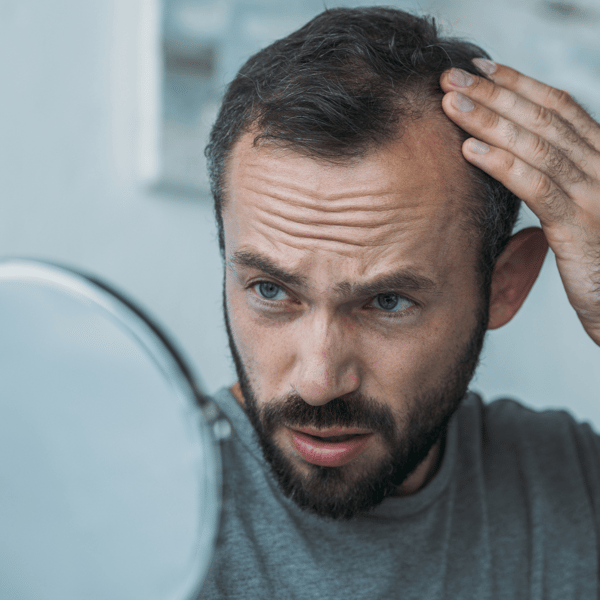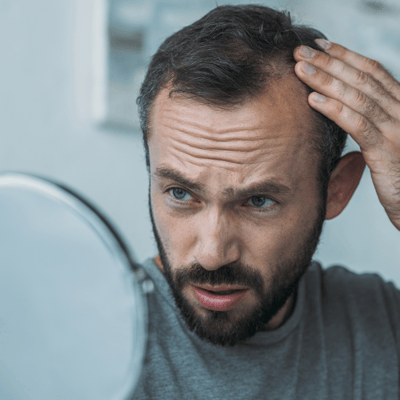
Hair loss is a common concern affecting millions worldwide, impacting both men and women of various ages. Approximately 50 million men and 30 million women in the United States experience hereditary hair loss 85% of men experiencing thinning hair by the age of 50. While losing some hair daily is a natural part of the hair growth cycle, excessive hair loss can be distressing.
Common Causes of Hair Loss
- Genetics (Androgenetic Alopecia): The most common cause of hair loss is hereditary, known as androgenetic alopecia. It affects both men and women and is commonly referred to as male-pattern baldness and female-pattern baldness.
- Hormonal Changes and Medical Conditions: A variety of conditions can lead to temporary or permanent hair loss, such as hormonal changes due to pregnancy, childbirth, menopause, and thyroid problems. Medical conditions include alopecia areata and polycystic ovary syndrome (PCOS).
- Medications and Supplements: Certain drugs and treatments, such as chemotherapy, can result in hair loss. Additionally, excessive intake of vitamin A and certain antidepressants, blood thinners, and other medications may contribute to hair loss.
- Poor Diet and Nutrition: Inadequate intake of essential nutrients like iron, vitamins, and minerals can negatively impact hair health, leading to thinning or loss.
- Physical and Emotional Stress: Physical trauma, surgery, or intense emotional stress can disrupt the normal hair growth cycle, causing a temporary shedding of hair.
Top Treatments for Hair Loss
- Topical Treatments (Minoxidil): Minoxidil is an over-the-counter topical treatment that is applied directly to the scalp. It is FDA-approved and has shown effectiveness in promoting hair growth and slowing down hair loss.
- Prescription Medications (Finasteride): Finasteride is an oral prescription medication approved for treating male-pattern baldness. It works by inhibiting the hormone dihydrotestosterone (DHT), which contributes to hair loss in men.
- Dietary Supplement (Nutrafol): Nutrafol is a popular dietary supplement designed to address hair loss and improve hair health. It contains a blend of botanical ingredients, vitamins, and minerals that are purported to support hair growth and combat the various factors that contribute to hair loss. Results with Nutrafol can vary, and it’s important to set realistic expectations. Hair growth is a gradual process, and individual responses may differ.
- Low-Level Laser Therapy (LLLT): LLLT involves using red light therapy to stimulate hair growth at the cellular level. It can be administered via laser devices or combs and has shown positive results in some cases.
- Platelet-Rich Plasma (PRP) Therapy: PRP therapy involves drawing a small amount of the patient’s blood, processing it to concentrate the platelets, and then injecting it into the scalp. This treatment has gained popularity for its potential to stimulate hair follicles.
- Hair Transplantation: For those seeking a more permanent solution, hair transplantation involves moving hair follicles from one part of the body to the balding or thinning area. It is a surgical procedure that has shown long-lasting results.
Hair loss is a common and often treatable condition, but the key lies in understanding its root cause and choosing appropriate treatments. It’s important to consult with a board-certified dermatologist to determine the underlying cause of hair loss and develop a personalized treatment plan.
Are you suffering from hair loss?
With offices from coast to coast, Forefront Dermatology and our Affiliated Practices are here and ready to help. Many of our offices offer appointments in days, not weeks. Find a location near you today.





